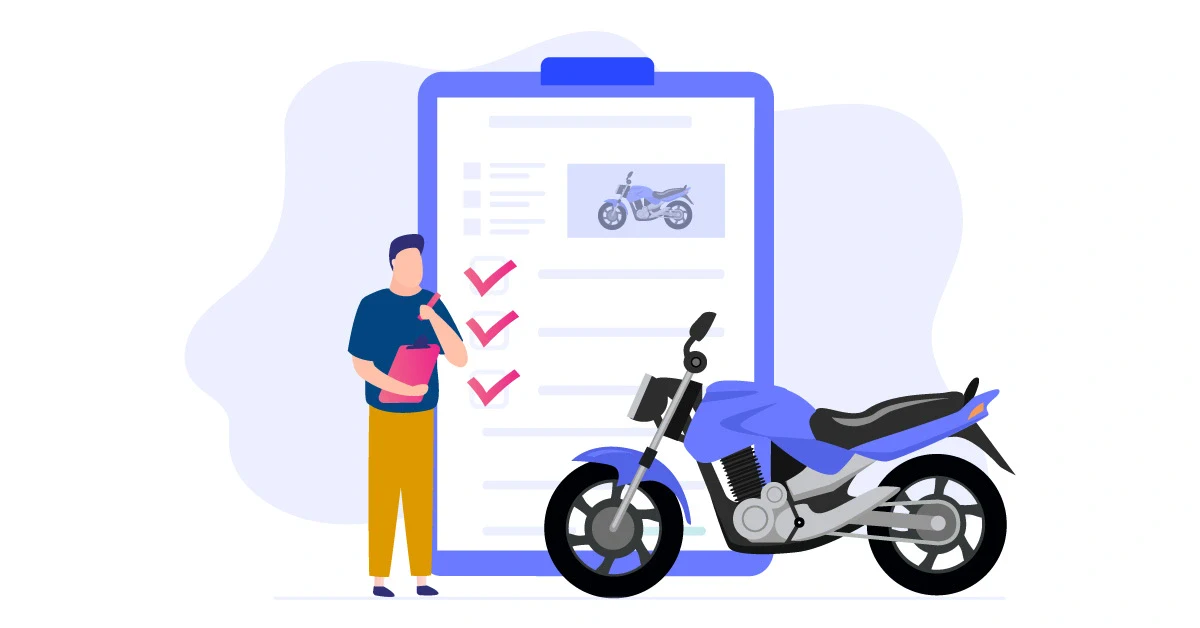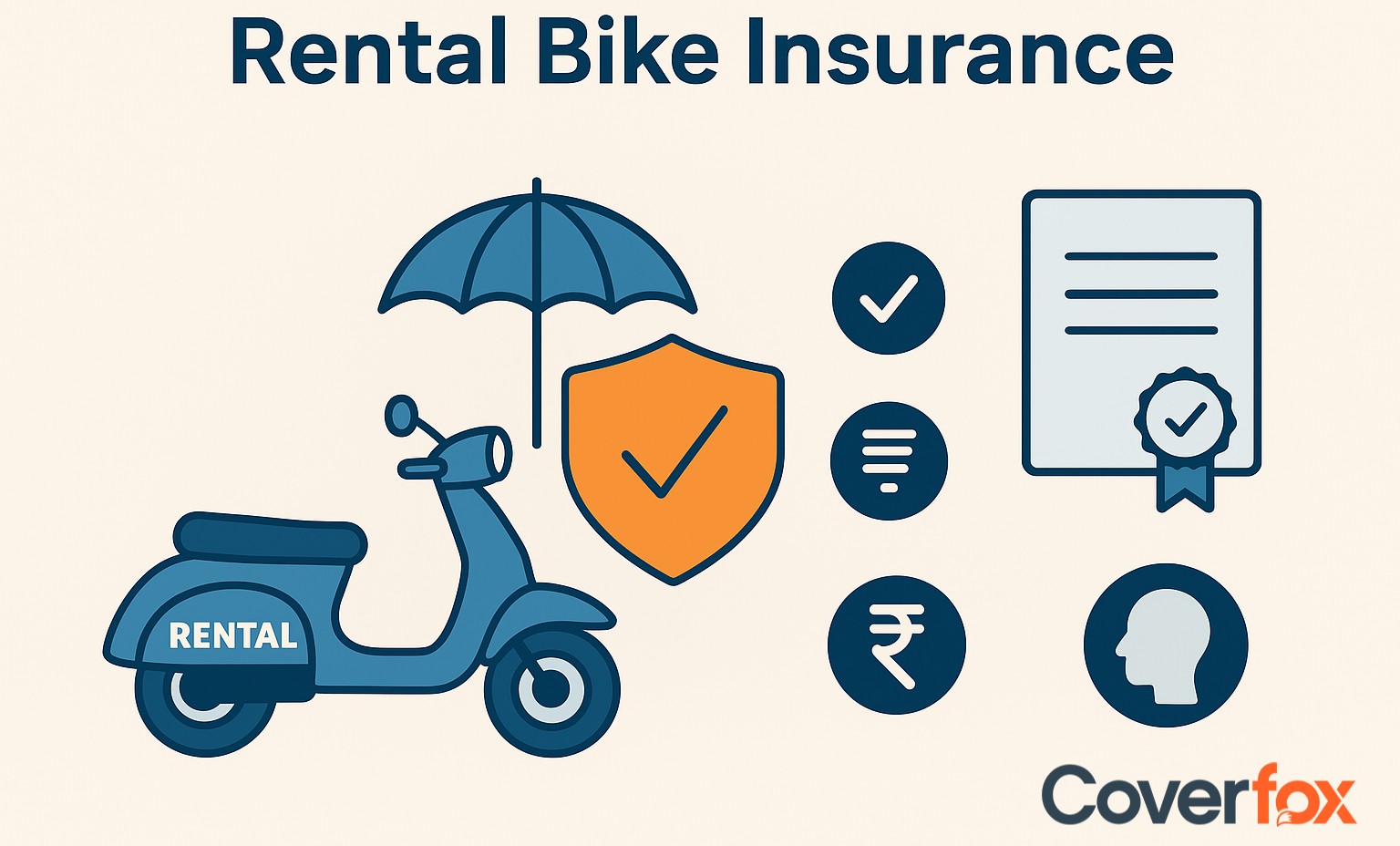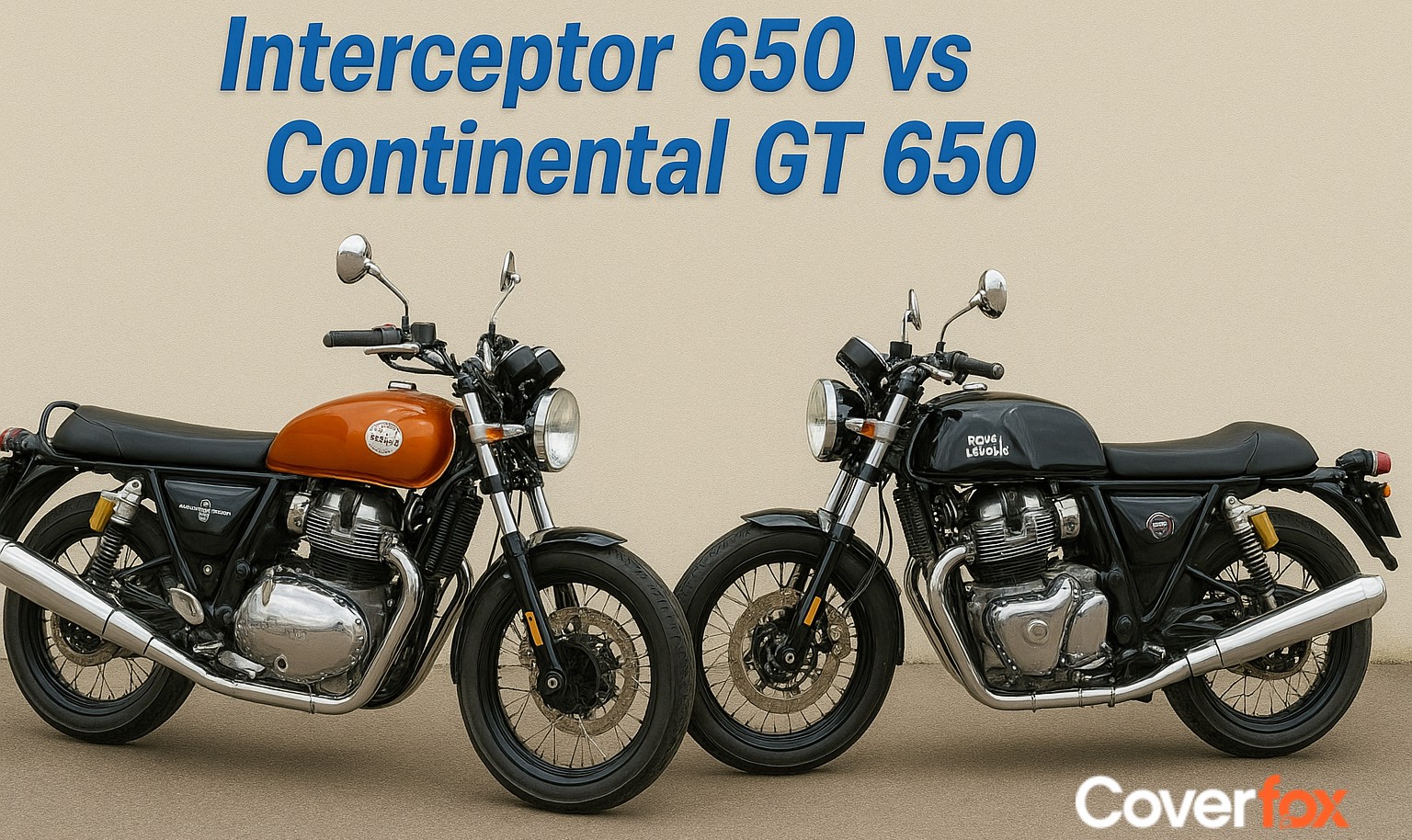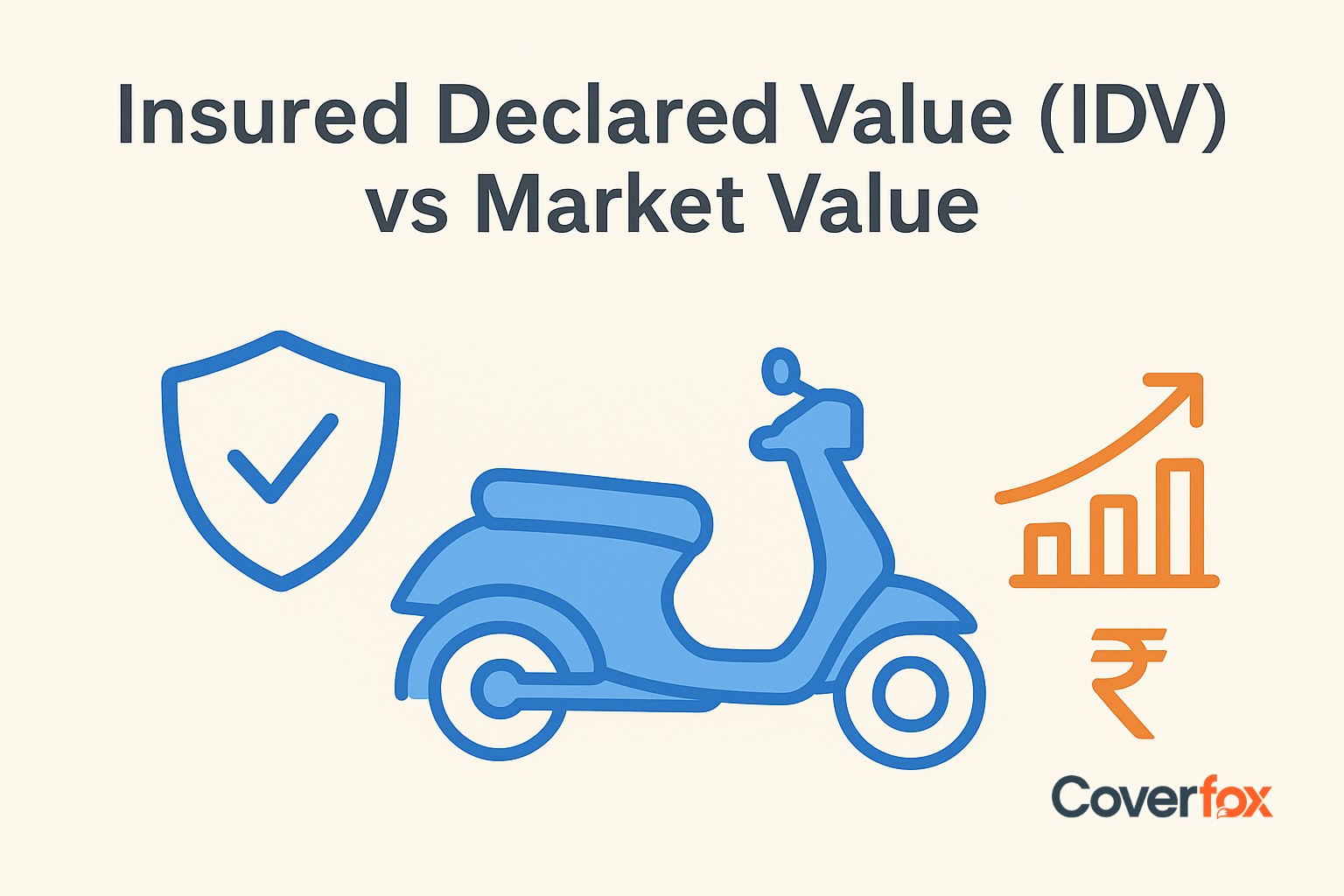If you're buying bike insurance for the first time, the amount of unfamiliar terms and jargon can be overwhelming.

But understanding these terms is essential to making informed decisions about your insurance policy, avoiding confusion during the claim process, and ensuring you're getting the coverage you need.
If you're buying bike insurance for the first time, the amount of unfamiliar terms and jargon can be overwhelming. But understanding these terms is essential to making informed decisions about your insurance policy, avoiding confusion during the claim process, and ensuring you're getting the coverage you need.
Knowing these key terms will also help you customize your policy to suit your needs and even save money in the long run. At Coverfox, we believe in making insurance easy to understand, which is why we’ve compiled a list of the most important bike insurance terms you should know.
Whether you're a first-time buyer or just looking to refresh your knowledge, these terms will help you navigate your bike insurance options with confidence.
Key Bike Insurance Terms You Should Know
1. Third-Party Liability
Third-party liability is the most basic form of bike insurance coverage. It covers the damages you may cause to someone else's property or any injury to another person in an accident. It is mandatory in India for all bike owners.
2. Comprehensive Cover
Comprehensive insurance covers both third-party liabilities and damage to your own bike. It includes protection from theft, vandalism, natural disasters (like floods or earthquakes), and man-made calamities (like riots). Comprehensive cover provides extensive protection but comes at a higher premium than third-party insurance.
3. Insured Declared Value (IDV)
IDV represents the maximum amount you can claim if your bike is stolen or completely damaged. It is the current market value of your bike and is determined by the insurer based on the bike’s age and depreciation. A higher IDV means a higher premium but more coverage.
4. No Claim Bonus (NCB)
NCB is a discount offered by insurers for not making any claims during the policy year. The longer you go without making a claim, the higher your NCB will be, which can significantly reduce your premium upon renewal.
5. Deductible
A deductible is the amount you agree to pay out of your pocket when making a claim, and the insurance company covers the rest. Higher deductibles can lower your premium, but they also mean higher out-of-pocket expenses in the event of a claim.
6. Personal Accident Cover
Personal Accident (PA) Cover provides compensation in case of injury or death caused by a bike accident. This cover is mandatory for all vehicle owners and can be extended to cover the pillion rider as well.
7. Zero Depreciation Cover
Also known as "bumper-to-bumper" insurance, this add-on covers the full cost of replacing bike parts without factoring in depreciation. Without zero depreciation cover, the insurer will only pay for the depreciated value of parts, meaning you'll have to cover the difference.
8. Cashless Network Garage
Insurance companies often have tie-ups with garages where you can get repairs done without paying upfront. The insurer directly settles the bill with the garage, making the process hassle-free. Always check if your preferred garage is in the insurer’s network.
9. Add-ons
Add-ons are optional covers you can purchase to enhance your base policy. Popular add-ons include:
- Engine Protect Cover: Covers damage to the engine due to waterlogging or oil leakage.
- Roadside Assistance: Provides help for on-road emergencies such as a flat tire or towing services.
10. Premium
The premium is the amount you pay for your insurance policy. It is usually paid annually and varies based on factors such as the type of bike, the coverage you choose, and your claim history.
11. Claim Settlement Ratio
The claim settlement ratio (CSR) is the percentage of claims an insurance company has successfully settled compared to the total claims received. A higher CSR indicates a reliable insurer.
12. Depreciation
Depreciation refers to the reduction in the value of your bike over time due to wear and tear. Insurers account for this when settling claims unless you have a zero depreciation cover.
13. Policy Tenure
This refers to the duration of the insurance policy, typically one year. However, some policies offer long-term coverage of up to 3 years, which can be more cost-effective in the long run.
14. Endorsement
An endorsement is any change made to your insurance policy after it has been issued. For example, if you modify your bike or add accessories, you will need an endorsement to include those in your coverage.
15. Exclusions
Exclusions are conditions or events not covered by your insurance policy. Common exclusions include normal wear and tear, mechanical breakdown, and damage caused by riding under the influence of alcohol.
16. Policyholder
The policyholder is the person in whose name the bike insurance policy is issued. They are entitled to all the benefits and are responsible for the premium payments.
17. IDV Adjustment
When renewing your bike insurance policy, the insurer may adjust your IDV based on the depreciation of your bike, which will affect your premium. Keeping track of your bike's current market value can help you negotiate better terms.
18. Grace Period
The grace period is the additional time given by the insurer to renew your policy after it has expired, typically ranging from 15 to 30 days. During this period, you are not covered but can still renew your policy without losing benefits like NCB.
19. Rider
A rider is an additional or optional coverage that can be added to your base policy for enhanced protection. Examples include accidental death benefits or enhanced personal accident cover.
20. Underwriting
Underwriting is the process by which an insurance company assesses the risk of insuring you and your bike. Factors such as your age, riding history, and the type of bike influence the underwriting process.
21. Reimbursement Claim
In a reimbursement claim, you first pay for the repairs out of your pocket and then file a claim with the insurer to get reimbursed. This is usually done when the repair shop is not in the insurer's network.
22. Total Loss
When your bike is damaged beyond repair or the repair cost exceeds 75% of the bike's IDV, the insurer will declare it a total loss and pay out the IDV.
23. Legal Liability
This refers to the policyholder's responsibility for damages or injuries caused to a third party in an accident. Legal liability is covered under third-party liability insurance.
Tips on Using These Terms to Save Money
Understanding bike insurance terms can help you in several ways:
Optimize Your Policy: Customizing your policy with the right add-ons like roadside assistance or zero depreciation cover ensures you only pay for what you need.
Leverage NCB: Maximize your No Claim Bonuses by being a safe rider and avoiding claims for minor repairs. Over time, this can lead to significant savings.
Choose the Right Deductible: Opting for a higher voluntary deductible can lower your premium, but ensure it's an amount you’re comfortable paying in case of a claim.
Conclusion
Being familiar with these essential bike insurance terms will empower you to make better decisions, find the right policy, and avoid unnecessary confusion during the claim process. Whether you're a first-time buyer or renewing your policy, these terms will help you get the most out of your bike insurance.
Ready to customize your policy? Explore bike insurance options or get a free quote today!





